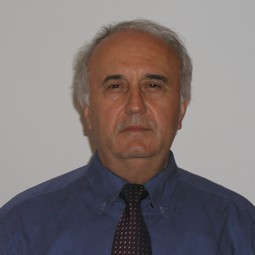Recent Progress in Linking Soil Science and Hydrology
A special issue of Water (ISSN 2073-4441). This special issue belongs to the section "Soil and Water".
Deadline for manuscript submissions: closed (31 October 2021) | Viewed by 12590
Special Issue Editors
Interests: hydrology; physical geography; earth and planetary sciences; environmental science; computer sciences
Interests: soil nutrient management; waste management; water management; soil pollution and remediation and precision agriculture
Special Issues, Collections and Topics in MDPI journals
Interests: soil quality; soil quality indicators; soil organic matter dynamics; use of agricultural and municipal wastes in to the soil; precision agriculture; use of innovative technologies in agriculture; carbon and water footprint in agriculture
Special Issues, Collections and Topics in MDPI journals
Special Issue Information
Dear Colleagues,
Soils play a vital role for hydrological processes. The (experimental) determination of soil hydraulic properties is, thus, a crucial step to understand and conceptualize these processes on the multiple temporal and spatial scales on which they can occur. The translation of soil hydraulic properties into model parameters is a further prerequisite for a realistic simulation of hydrological processes. However, this translation often is not trivial due to complex environmental conditions, anthropogenic impacts, and spatial scaling issues. Therefore, this Special Issue aims to collect innovative experimental and/or simulation-based studies seeking to find the link between soil physical properties and runoff generation processes from small to large spatial scales. Researchers are invited to present new field methods, experimental setups, and modeling approaches for the determination of runoff processes from soil properties.
A strong focus is given to the determination of soil hydraulic porperties and related spatial patterns, aiming to capture the heterogeneity of soil properties in space. In particular, contributions are welcome that deal with the uncertainties imposed by the spatial variability of soil hydraulic properties on the simulation of hydrological processes, both on spatial and temporal scales. This also includes innovative approaches for the spatial validation of hydrological simulation models using diverse data sources on soil properties and spatial information on runoff generation.
Prof. Markus C. Casper
Dr. Christos Tsadilas
Dr. Eleftherios Evangelou
Guest Editors
Manuscript Submission Information
Manuscripts should be submitted online at www.mdpi.com by registering and logging in to this website. Once you are registered, click here to go to the submission form. Manuscripts can be submitted until the deadline. All submissions that pass pre-check are peer-reviewed. Accepted papers will be published continuously in the journal (as soon as accepted) and will be listed together on the special issue website. Research articles, review articles as well as short communications are invited. For planned papers, a title and short abstract (about 100 words) can be sent to the Editorial Office for announcement on this website.
Submitted manuscripts should not have been published previously, nor be under consideration for publication elsewhere (except conference proceedings papers). All manuscripts are thoroughly refereed through a single-blind peer-review process. A guide for authors and other relevant information for submission of manuscripts is available on the Instructions for Authors page. Water is an international peer-reviewed open access semimonthly journal published by MDPI.
Please visit the Instructions for Authors page before submitting a manuscript. The Article Processing Charge (APC) for publication in this open access journal is 2600 CHF (Swiss Francs). Submitted papers should be well formatted and use good English. Authors may use MDPI's English editing service prior to publication or during author revisions.
Keywords
- Experimental determination of soil hydraulic properties and translation in model parameters
- Linking soil physical properties to model parameters and model behavior
- Effect of spatial heterogeneity of soil properties on the temporal and spatial scales of hydrological processes
- Effect of spatial heterogeneity of soil properties on hydrologic model simulation uncertainties
- Spatial validation of hydrological simulations
- Innovative Pedotransferfunctions







